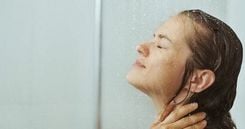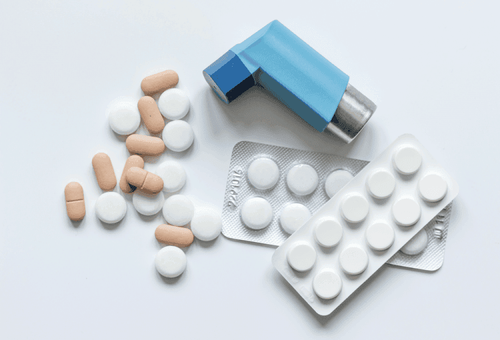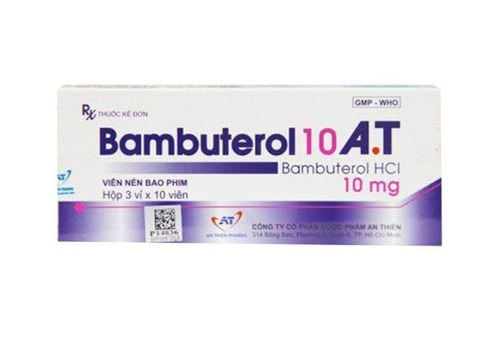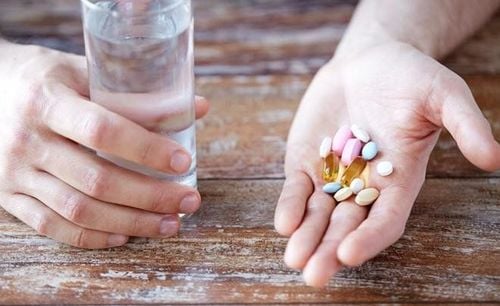This is an automatically translated article.
The article was consulted professionally with - Master, Doctor Nguyen Ngoc Bach - Respiratory Internal Medicine - Department of General Internal Medicine - Vinmec Times City International General Hospital.Paint colors make the room, house and objects in the house more beautiful and lively. However, with that, you will live with the smell of paint. Therefore, the question many people are interested in is the smell of toxic paint?
1. Is the smell of new house paint toxic?
Many people wonder if inhaling the smell of paint is toxic, the answer is "Yes" even for healthy people. On the market today, there are two most common types of paint, which are:
Latex (or acrylic) paint: This is the most popular type of paint today. Latex paint does not contain solvents, it can be wiped off with soap and water. Latex paint is currently considered safe for use or exposure even by pregnant women, as long as the area where the paint is applied is well ventilated. If you smell the paint and feel uncomfortable and tired, go out and get some fresh air and ask someone else to finish your work. Oil-based paint: This paint contains solvents and requires turpentine or white gasoline to remove this paint. Several studies have shown that exposure to these paints by pregnant women, including inhaling the paint fumes with these solvents, can increase the risk of miscarriage, and possibly birth defects. unborn baby or have cognitive problems. Therefore, you should not use or come into contact with or near this paint, especially when you are pregnant. According to scientists, polymers are not toxic, but liquid solvents used to dissolve polymers are responsible for the unpleasant pungent odor of paints, allergies, and respiratory diseases. ..
Organic compounds such as formaldehyde, xylene, benzene are easily vaporized in the air, causing toxicity when inhaled. Formaldehyde with concentrations of 0.3 ppm or more can cause coughing, skin allergies. In higher concentrations it can cause burning pain in the eyes, nose and throat. This chemical is also classified as a carcinogen to the throat, larynx and parts of the respiratory system.
According to chemists, volatile organic compounds (VOCs) when inhaled will cause respiratory irritation. Especially it will threaten the health of pregnant women, it affects the brain, nervous system, causing birth defects... for the fetus.
Paint particles when sprayed will fly in the air, when children breathe in, these paint particles will be swept deep in, causing inflammatory reactions, stimulating respiratory constriction, increasing secretions... damaging alveolar damage, cough, difficulty breathing, leading to pneumonia ...
APEO ingredient is an additive to maintain paint quality, although it is found in small quantities in paints, it is the most dangerous substance because it is a substance. unclassifiable carcinogen. This substance can disrupt hormone production, affect hormones, fertility and increase cancer cells...
Paints used to paint wood, metal, door frames, concrete cardboard ... when mixing colors also contains poisons that cause people to inhale poison, cause allergies, rashes, edema, vomiting...
Baits, wall paints also contribute to cancer , especially blood cancer in children. The level of danger of wall paint for children is 10 times higher than that of adults, because young children often cling to the wall and then put their hands in their mouths, or breathe in paint dust... causing severe effects on the nervous system. , reduce intelligence, retard physical development, have behavioral abnormalities and cause hearing damage in children. At high concentrations children may experience coma, convulsions and death.
2. How to avoid harm from paint smell?
The best way is that you should not smell the paint, if your house has just been painted, you should open the door for a period of time, wait for the smell of paint to disappear, then move in. The recommended period is 1 week after painting the house, you can move in. This period of time you need to remove the strong smell of the paint to limit the risk of poisoning, allergies, respiratory diseases, headaches, discomfort, nausea...
In case you have to continue If you are exposed to oil-based paints on a daily basis (such as home repairs or living near a construction site), you should take the following measures:
Reduce exposure time to paint: At present, we do not know. How much paint exposure is safe, so you need to judge for yourself. Whenever you feel tired, get out immediately, get some fresh air until you feel better. Always open the window to avoid inhaling the smell of paint, you can wear a mask or use a fan to limit the smell of paint. Wear gloves, long pants, long-sleeved shirt to protect your skin if your work often requires contact with paint. Do not eat or drink right where you are painting. Pregnant women should not do jobs that require frequent contact with paint. With an old house that needs to be painted and repainted, you need to pay attention to keep food and drinking water, items to be used... away from paint and baits to limit harmful substances from sticking. If you get paint on your skin, hands and feet, use white wine to wash it off. If there are children in the house, absolutely do not let children touch painted objects, limit letting children cling to walls, or gnaw on window bars and painted objects. Children need to wash their hands before eating and when going to bed, especially children who often lie, crawl, and play on the ground. If you have a need to paint the walls of a new house, you should choose high-quality paints, eco-friendly paints, water-based paints, cement-based powder coatings, etc. to choose genuine products because it has less risk of odor emission thanks to with high processing technology, ensuring safety for users. Do not use poor quality paints, cheap paints floating on the market because they may contain high levels of lead and mercury that will affect the health of everyone in the house. In addition, in folklore, there are many ways to deodorize paint as follows:
Put a lot of pineapples in the corners of the room to absorb the smell of paint, instead of inhaling the smell of paint, you will smell the fragrant pineapple. Wrap pieces of charcoal, activated carbon, and biochar in newspaper and leave it in many places in the house to absorb the smell of paint. Note, when doing so, you need to close the doors, windows ... to be able to achieve a higher deodorizing effect and you must not stay indoors during the deodorization process. Boil a pot of vinegar in the middle of the room, at first the vinegar will have an unpleasant smell, but after 2 days of sticking to the wall it will give off a pleasant smell. Cutting an onion into thin slices and spreading it around the house helps to get rid of the paint smell. Diluted salt solution also works to deodorize paint quite well. For every 10m2 of your floor, put 1 bowl of diluted salt water, the paint smell will decrease sharply in a few days. Put a few glasses of fresh milk in the room and close the door, fresh milk can absorb to reduce the smell of paint. Mix flour into water then mix with crushed garlic. This method has a quick and obvious effect, but cannot be applied to people who are allergic to garlic. An effective way to remove paint odors is to use air purifiers such as air purifiers, which are essential to protect the health of you and your family members.
Air purifiers have been associated with the need to clean the air, it is really effective, taking on the role of "lungs" to quietly filter dirt, mold and especially bacteria in the air. breathing, creating the safest living space.
Air purifier production technology is now very developed, there are even very small air purifiers, weighing only 40g and easily worn on children's necks like necklaces or children's collar clips every day. . These types of air purifiers will continuously generate about 2,000,000 negative ions/cm3, 100 times higher than the ion concentration that natural forests produce, helping to clean PM2.5 dust, remove harmful paint odors, help improve the quality of the outdoor or indoor air the child wears the inhaler himself.
Millions of negative ions generated from the device on the neck will diffuse into the air in front of the wearer, these ions will bind with airborne particles here (fine dust, pollen, fur, etc.) ...) turn them into bigger, bigger blocks and fall to the ground. This mechanism of action is like an invisible mask that effectively removes airborne particles, protecting the wearer from inhaling airborne pollutants.
Applying scientific and technological advances to daily life will help us to better prevent disease, be more proactive, and protect the health of ourselves and our family members.
Please dial HOTLINE for more information or register for an appointment HERE. Download MyVinmec app to make appointments faster and to manage your bookings easily.














